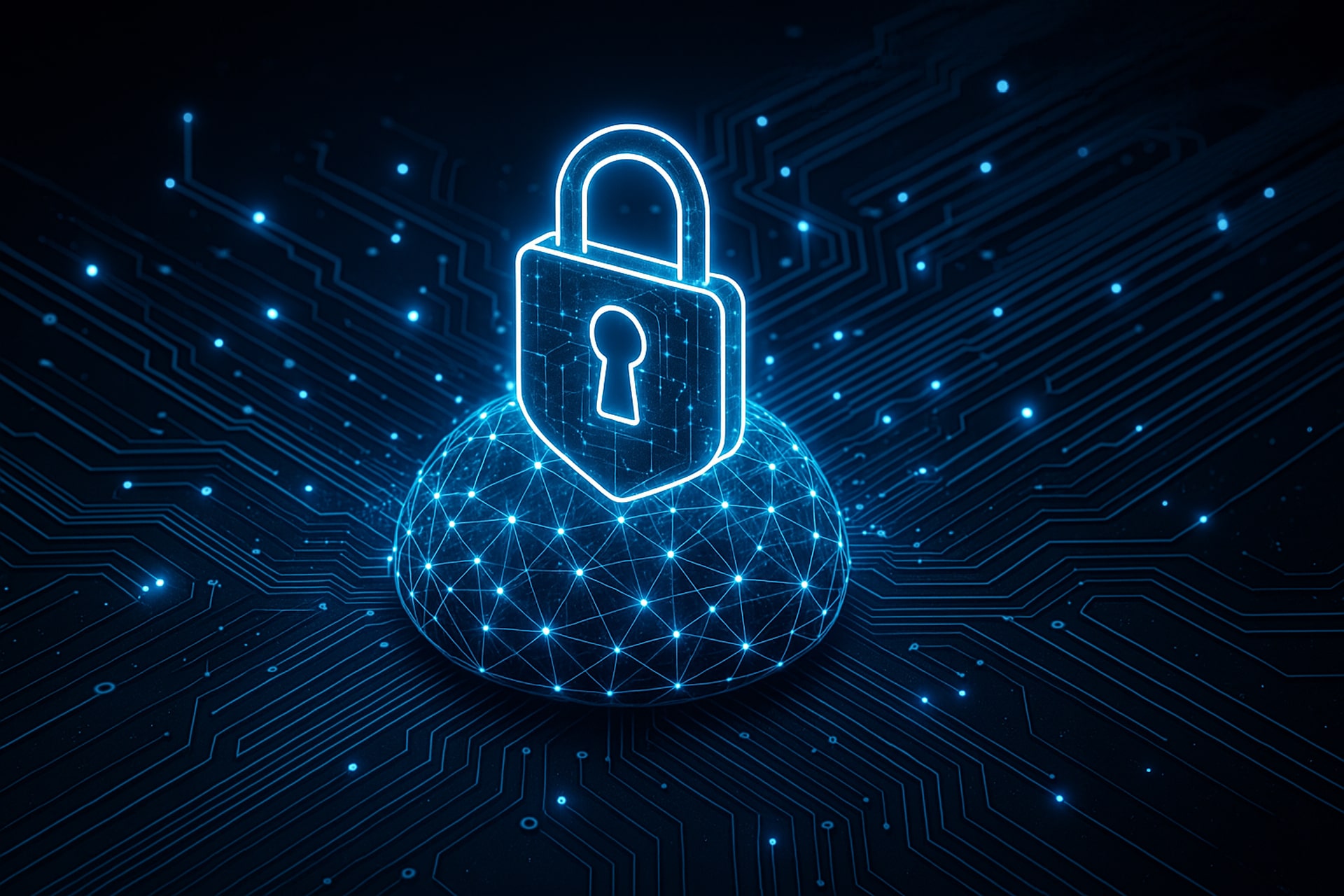
In this lesson, we’ll delve into the exciting world of network security, exploring the essential concepts and principles that form the bedrock of a secure network. Think of it like building a fortress – we’re going to learn the strategies and tools to keep the bad guys out and your data safe.
In this lesson, we’ll delve into the exciting world of network security, exploring the essential concepts and principles that form the bedrock of a secure network. Think of it like building a fortress – we’re going to learn the strategies and tools to keep the bad guys out and your data safe.
Imagine your network as a bustling city, filled with valuable information flowing through its digital streets. This data can range from personal information to confidential business secrets, and it’s crucial to keep it secure. A network security breach can have devastating consequences:
Stolen credit card information, fraudulent transactions, and ransom demands can cripple businesses and individuals.
A data breach can erode trust in your organization, leading to a loss of customers and partners.
Non-compliance with data protection regulations like GDPR can result in hefty fines and legal battles.
Attacks like ransomware can bring your systems to a standstill, disrupting operations and productivity.

Keeping Secrets Safe: Confidentiality is the bedrock of network security. It ensures that sensitive information remains private and accessible only to authorized individuals. Think of it like a secret code – only those with the right key can access the information.
USE CASE: A healthcare provider needs to safeguard patient medical records. Confidentiality ensures that these records are only accessible by authorized medical professionals, preventing data breaches or leaks.

Ensuring Data Accuracy: Data integrity ensures that information remains unaltered and trustworthy. Imagine a crucial document that gets tampered with – that’s where integrity comes in. It safeguards data from unauthorized modifications, ensuring that the information is reliable.
USE CASE: A financial institution relies on accurate transaction records. Data integrity ensures that no unauthorized changes are made to a client’s bank account during transfers, maintaining trust and accuracy in financial data.

Availability: Keeping Things Running – Availability ensures that network resources are accessible to authorized users when needed. It’s like ensuring that the lights stay on in your city. If the network is unavailable, it can cripple operations and productivity.
USE CASE: An e-commerce website experiences high traffic during a holiday sale. Availability ensures that the website remains online and responsive, allowing customers to browse and complete purchases without disruption.
Malware encompasses a broad range of malicious software designed to infiltrate and damage your network. It comes in various forms, each with its own sinister purpose.
Replicate themselves and spread to other devices, often causing damage as they go.
Self-replicating and spread without human intervention, often using network vulnerabilities to propagate.
Masquerade as legitimate software but contain hidden malicious code, granting attackers access to your system.
Secretly monitors your online activity, collecting personal information and sending it to attackers.
Encrypts your data and demands payment for its decryption, potentially holding your critical information hostage.
Imagine a user opening an email attachment containing a virus. The virus spreads to other computers on the network, causing data loss and system crashes.
Phishing attacks exploit social engineering techniques to trick users into revealing sensitive information.
Attackers often disguise themselves as legitimate entities, such as banks or government agencies, to gain your trust.
A user receives an email claiming to be from their bank, asking them to update their account information. The email contains a malicious link that leads to a fake website designed to steal their login credentials.
DoS attacks aim to overwhelm a network or server with traffic, making it unavailable to legitimate users. It’s like a massive crowd trying to enter a building, causing a bottleneck and preventing access for others.
An attacker sends a massive amount of traffic to a company’s website, overloading its servers and making the website inaccessible to customers. This can cause significant financial losses and damage the company’s reputation.
MitM attacks allow attackers to intercept communication between two parties, eavesdropping on their conversation and potentially modifying data. It’s like eavesdropping on a phone call, potentially altering the conversation to their advantage.
An attacker intercepts communication between a user and a website, stealing login credentials and other sensitive information.
Now that you understand the threats, it’s time to equip yourself with the tools to combat them. Here are some essential network security tools.

Firewalls act as a digital gatekeeper, controlling network traffic and blocking unauthorized access. They analyze incoming and outgoing traffic based on predefined rules, preventing malicious activity fromac reaching your network. Think of them as the guardians of your network, keeping the bad guys at bay.
A firewall blocks a malicious connection attempt from an unknown IP address, preventing malware from entering the network.

IDS/IPS systems constantly monitor network activity, detecting suspicious patterns and potential threats. They alert administrators to suspicious activity, and in some cases, can actively block threats in real-time. They act as the watchdogs of your network, keeping a watchful eye for any signs of trouble.
An IDS detects a potential malware attack and sends an alert to the administrator. The administrator can then take action to block the attack and mitigate the threat.

Anti-malware software is essential for protecting your network from malware. It scans your systems for threats, removes existing malware, and prevents new malware from entering your network. Think of it as the antidote to the digital virus.
Anti-malware software identifies and removes a virus that has infected a user’s computer, preventing it from spreading to other devices on the network.

VPNs create an encrypted tunnel between your device and a remote server, protecting your online activity from snooping. It’s like a secret tunnel that hides your data from prying eyes.
A user connects to a VPN to access a website securely while using a public Wi-Fi network, ensuring that their browsing history and personal data remain private.

SIEM solutions provide a centralized platform for collecting and analyzing security data from various sources across your network.
This data helps security analysts identify threats, investigate incidents, and respond to attacks effectively. They are the central command center of your network security, providing real-time insights and actionable intelligence.
A SIEM solution detects a series of suspicious login attempts from multiple locations. This triggers an alert, allowing security analysts to investigate the activity and prevent a potential account takeover.
Now that we’ve covered the theoretical concepts, let’s put them into practice. Here are some key skills you will learn to master for a successful career in network security.
Network scanning tools allow you to identify devices and services on your network, and vulnerability assessment tools help you find security flaws that attackers could exploit. Think of it as a security audit, identifying weaknesses before attackers can exploit them.
Security configuration and hardening involve configuring devices and systems to enhance their security posture. It’s like putting extra locks on your fortress to make it more resistant to attacks.
Incident response involves identifying, analyzing, and mitigating security incidents. It’s about knowing how to react when a security breach occurs. Forensic analysis helps you investigate incidents, identify the source of the attack, and gather evidence for future prosecution.
Security policies define the rules and guidelines for network security. They are crucial for ensuring that users understand their responsibilities and adhere to best practices. Think of it as the law of the land, ensuring that everyone follows the rules to keep the network safe.
The world of network security is constantly evolving, with new threats emerging all the time. To stay ahead of the game, it’s essential to continue learning and developing your skills. Here are some resources to help you on your journey:
EC-Council Certifications:
Security Communities and Forums:
Remember, network security is an ongoing journey, not a destination. By staying informed, embracing new technologies, and constantly improving your skills, you can effectively protect your network and safeguard valuable information in today’s increasingly complex digital landscape.